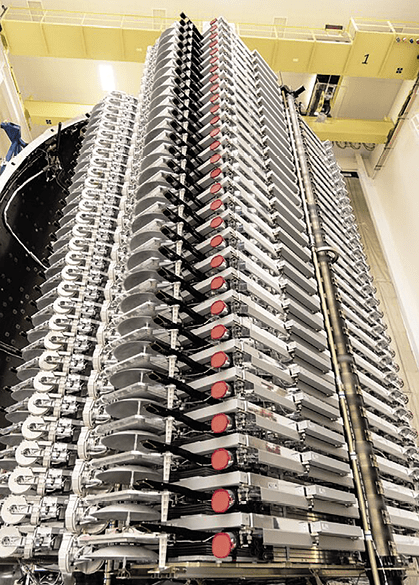Beijing on Tuesday accused the United States of irresponsible and unsafe conduct in space over two "close encounters" between the Chinese space station and satellites operated by Elon Musk's SpaceX.
Tiangong, China's new space station, had to manoeuvre to avoid colliding with one Starlink satellite in July and with another in October, according to a note submitted by Beijing to the United Nations space agency this month. A copy of the note is printed below.
United Nations General Assembly
Committee on the Peaceful Uses of Outer Space
A/AC.105/1262
Distr.: General
6 December 2021
English
Original: Chinese
Information furnished in conformity with the Treaty on Principles Governing the Activities of States in the Exploration and Use of Outer Space, including the Moon and Other Celestial Bodies
Note verbale dated 3 December 2021 from the Permanent Mission of China to the United Nations (Vienna) addressed to the Secretary-General
The Permanent Mission of China to the United Nations (Vienna) presents its compliments to the Secretary-General of the United Nations and has the honour to refer to article V of the Treaty on Principles Governing the Activities of States in the Exploration and Use of Outer Space, including the Moon and Other Celestial Bodies 1 (the Outer Space Treaty), which provides that “States Parties to the Treaty shall immediately inform the other States Parties to the Treaty or the Secretary-General of the United Nations of any phenomena they discover in outer space, including the Moon and other celestial bodies, which could constitute a danger to the life or health of astronauts”. In accordance with the above-mentioned article, China hereby informs the Secretary-General of the following phenomena which constituted dangers to the life or health of astronauts aboard the China Space Station.
The China Manned Space Programme completed five launch missions in 2021, with the successful launching into orbit of the Tianhe core module of the China Space Station, the Tianzhou-II and Tianzhou-III cargo spacecraft and the Shenzhou-XII and Shenzhou-XIII crewed spacecraft. The China Space Station has travelled stably in a near-circular orbit at an altitude of around 390 km on an orbital inclination of about 41.5 degrees.
During this period, Starlink satellites launched by Space Exploration Technologies Corporation (SpaceX) of the United States of America have had two close encounters with the China Space Station. For safety reasons, the China Space Station implemented preventive collision avoidance control on 1 July and 21 October 2021, respectively.
1. The first collision avoidance
As from 19 April 2020, the Starlink-1095 satellite had been travelling stably in orbit at an average altitude of around 555 km. Between 16 May and 24 June 2021, the Starlink-1095 satellite manoeuvred continuously to an orbit of around 382 km, and then stayed in that orbit. A close encounter occurred between the Starlink-1095 satellite and the China Space Station on 1 July 2021. For safety reasons, the China Space Station took the initiative to conduct an evasive manoeuvre in the evening of that day to avoid a potential collision between the two spacecraft.
2. The second collision avoidance
On 21 October 2021, the Starlink-2305 satellite had a subsequent close encounter with the China Space Station. As the satellite was continuously manoeuvring, the manoeuvre strategy was unknown and orbital errors were hard to be assessed, there was thus a collision risk between the Starlink-2305 satellite and the China Space Station. To ensure the safety and lives of in-orbit astronauts, the China Space Station performed an evasive manoeuvre again on the same day to avoid a potential collision between the two spacecraft.
In view of the foregoing, China wishes to request the Secretary-General of the United Nations to circulate the above-mentioned information to all States parties to the Outer Space Treaty and bring to their attention that, in accordance with article VI of the Treaty, “States Parties to the Treaty shall bear international responsibility for national activities in outer space, including the moon and other celestial bodies, whether such activities are carried on by governmental agencies or by non-governmental entities, and for assuring that national activities are carried out in conformity with the provisions set forth in the present Treaty.
1 General Assembly resolution 2222 (XXI), annex.











